The best steel gravel bikes give you something different from gravel bikes made from other materials.
Steel is a favourite of smaller-volume producers, so you can find unusual specs, often with geometries and components derived from mountain bikes rather than the road bike standards that are more commonly used in the best carbon gravel bikes, best aluminium gravel bikes and even the best titanium gravel bikes.
It's also easier to source a custom gravel bike designed exactly to your specifications and size, due to the small-volume nature of much steel gravel bike construction.
Steel's strength and ability to absorb vibration make it a good choice for gravel bikes, providing a comfortable, durable ride.
Below are the best steel gravel bikes we've reviewed at BikeRadar and below that a short buyer's guide to steel gravel bikes.
You can find more buying information on gravel bikes in general in our main guide to the best gravel bikes, covering all the different materials available.
The best steel gravel bikes in 2025
Marin Nicasio +
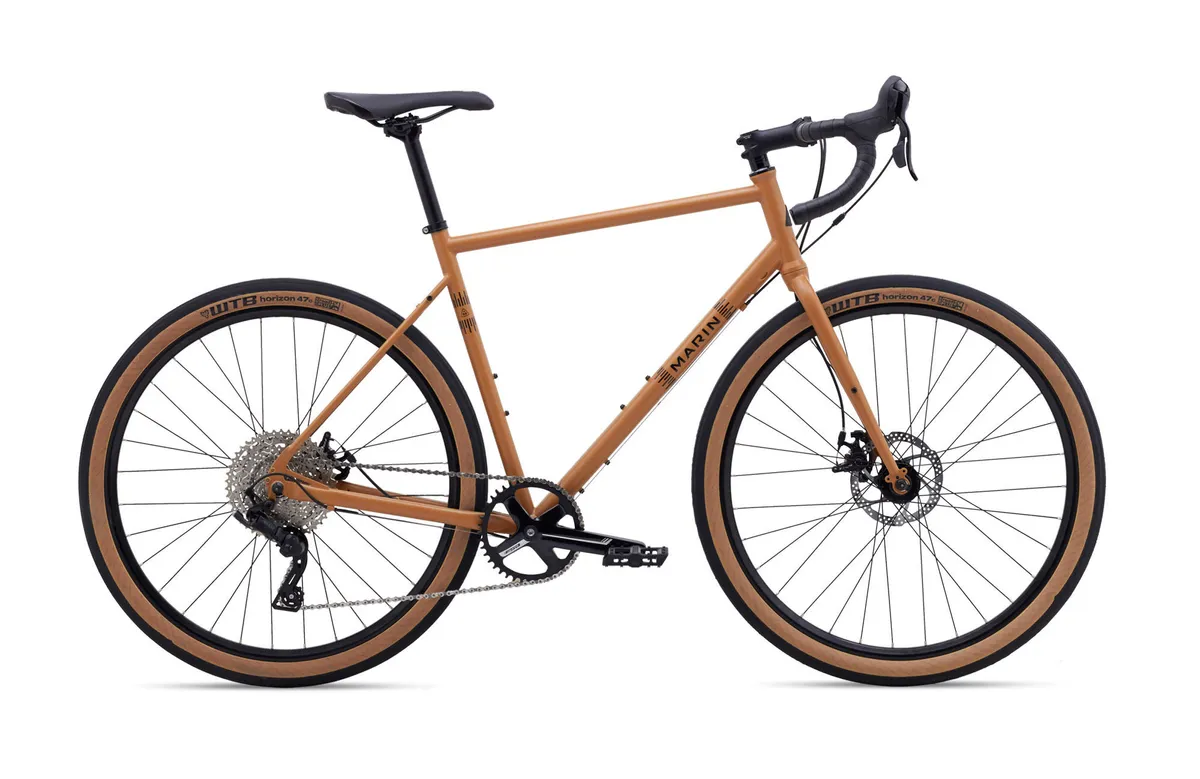
- £845/$899/€899 as tested
- Pros: Amazing value; ideal for bikepacking; seriously fun to ride
- Cons: Hard to fault anything at this price
Marin has kept things simple with the Nicasio +, with the steel frame paired to a steel fork. That leads to a weight close to 13kg, but what the Nicasio + lacks in the weight department, it more than makes up for in its great geometry and handling.
The single-chainring 9-speed spec is straightforward and easy to maintain, and gives plenty of gear range. We found it a really fun ride, particularly when the terrain got tough. It's a bike that's greater than the sum of its parts.
Rå Valravn

- £2,700 (frameset only) as tested
- Pros: Charming retro appeal; mountain-bike derived drivetrain; something a little different
- Cons: Hefty price tag
We've had the Rå Valravn in for long-term review. Rå is a small Yorkshire-based bike brand that derives its expertise from the mountain bike world and the Valravn reflects this with MTB-inspired geometry.
Our custom build included a RockShox Rudy XPLR gravel suspension fork, Rockshox Reverb XPLR gravel dropper post, SRAM Red AXS XPLR groupset and Zipp 101 gravel bike wheels.
It's a great bike for hammering fast trails and we've also used it for commuting and road duties too, where it's comfortable and smooth-riding.
Orro Terra S GRX600
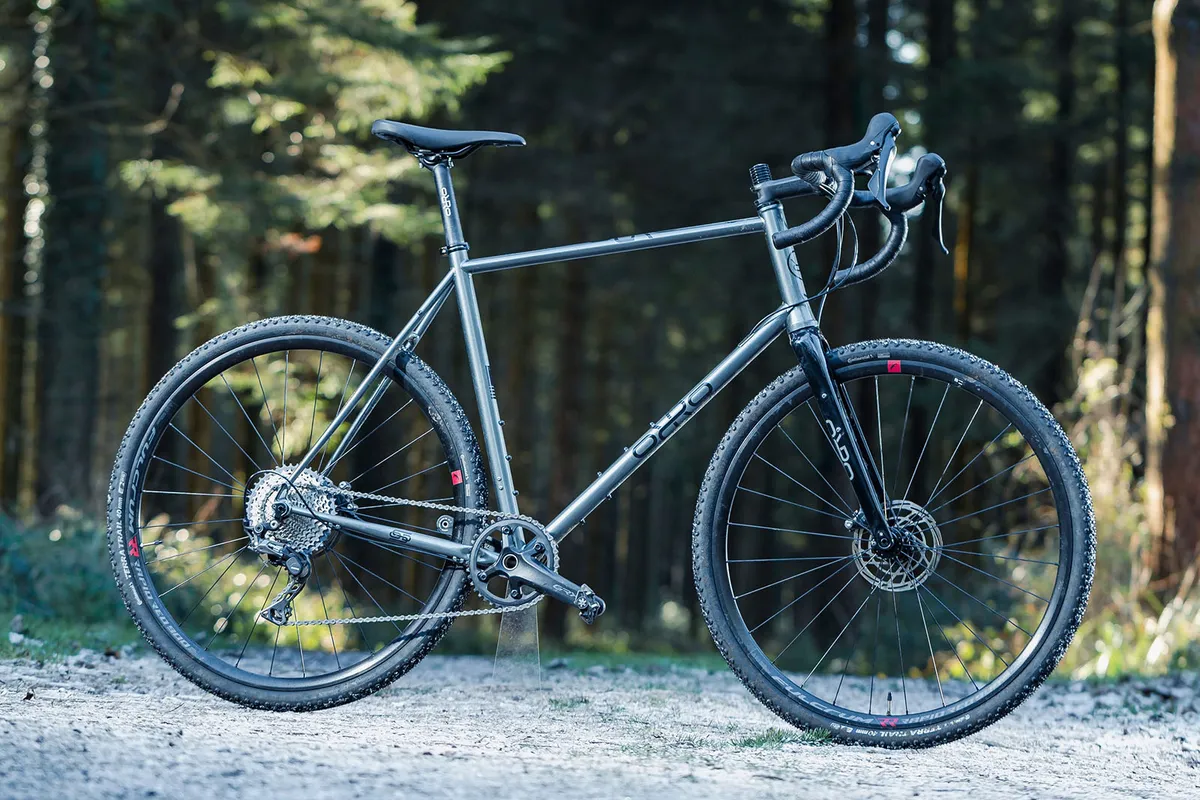
- £2,000/$2,170/€2,012 as tested
- Pros: Versatile configuration; impressive vibration damping; good-value components package
- Cons: Brakes were set up a little soft
Triple-butted steel and a carbon fork are at the heart of the Orro Terra S, which also sports a wide array of mounts for bikepacking duties, including on the fork legs. We liked the springy, vibration-absorbing ride and ability to spring out of berms, while the geometry would suit longer rides on mixed tarmac/gravel surfaces.
The Terra S is well specced for its price, with 1x Shimano GRX600, Fulcrum wheels and Continental Terra Trail 40mm tyres, along with Deda bars and stem.
BiVi Bunker Malvern
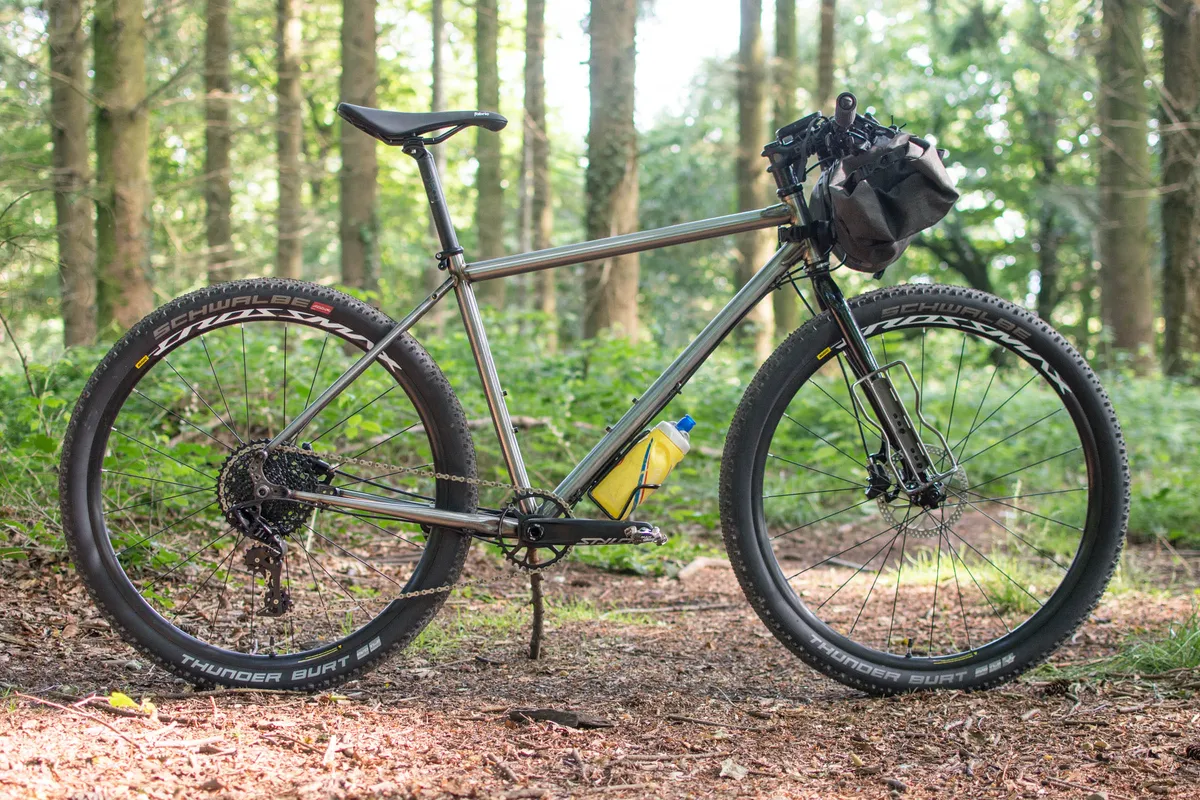
- £1,399 as tested
- Pros: Charming retro appeal; mountain-bike derived drivetrain; something a little different
- Cons: Weak Clarks brakes
Halfway between a flat-bar gravel bike and a retro mountain bike, the Bivi Bunker provides versatility with its collection of bolts and bosses. The lacquered finish shows off the raw steel of the frame.
There's a ride position that's long and low for a gravel bike, but short for a mountain bike, solid steel fork and MTB-derived 11-speed single-ring SRAM GX groupset as specced. This leads to an affordable price, but it's easy to spec some gravel bike upgrades.
Cinelli Nemo Gravel Disc Ekar Mendini
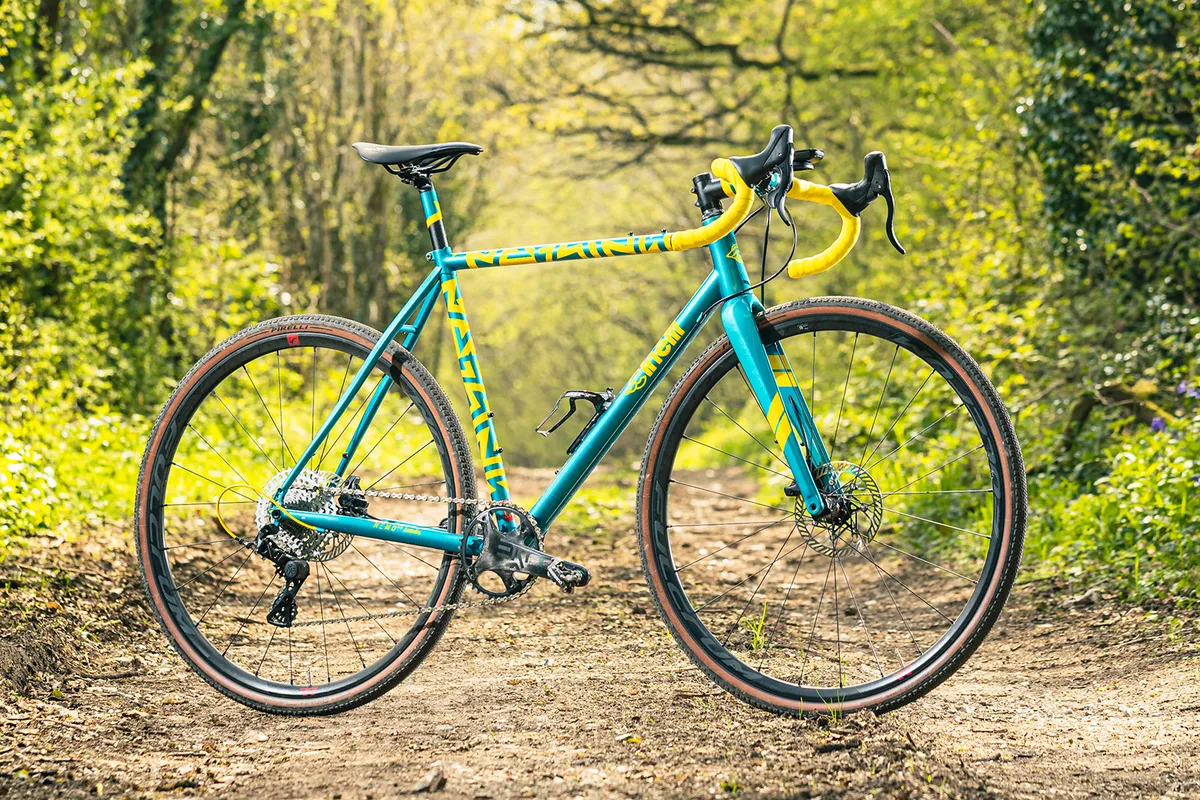
- £5,149/$6,936/€6,000 as tested
- Pros: Fantastic ride on road and lighter gravel
- Cons: Struggles on more technical terrain; quite narrow clearance can lead to mud build-up; low-spec wheels for the bike's price
The Cinelli Nemo is built out of high-quality Italian Columbus Spirit HSS triple-butted steel tubing. It has a geometry that's more like a road bike than many gravel bikes, and designed for fast gravel rides.
This makes it good for less difficult trails, although it does mean more technical routes stretch the bike's capabilities. With only 40mm of tyre clearance, there's not quite enough room for the mud accumulation that's common in the UK outside dry summer rides.
With a top-spec Campagnolo Ekar groupset, there's loads of gear range, although given the bike's price we'd have liked to see a set of the best gravel bike wheels included.
Cotic Cascade
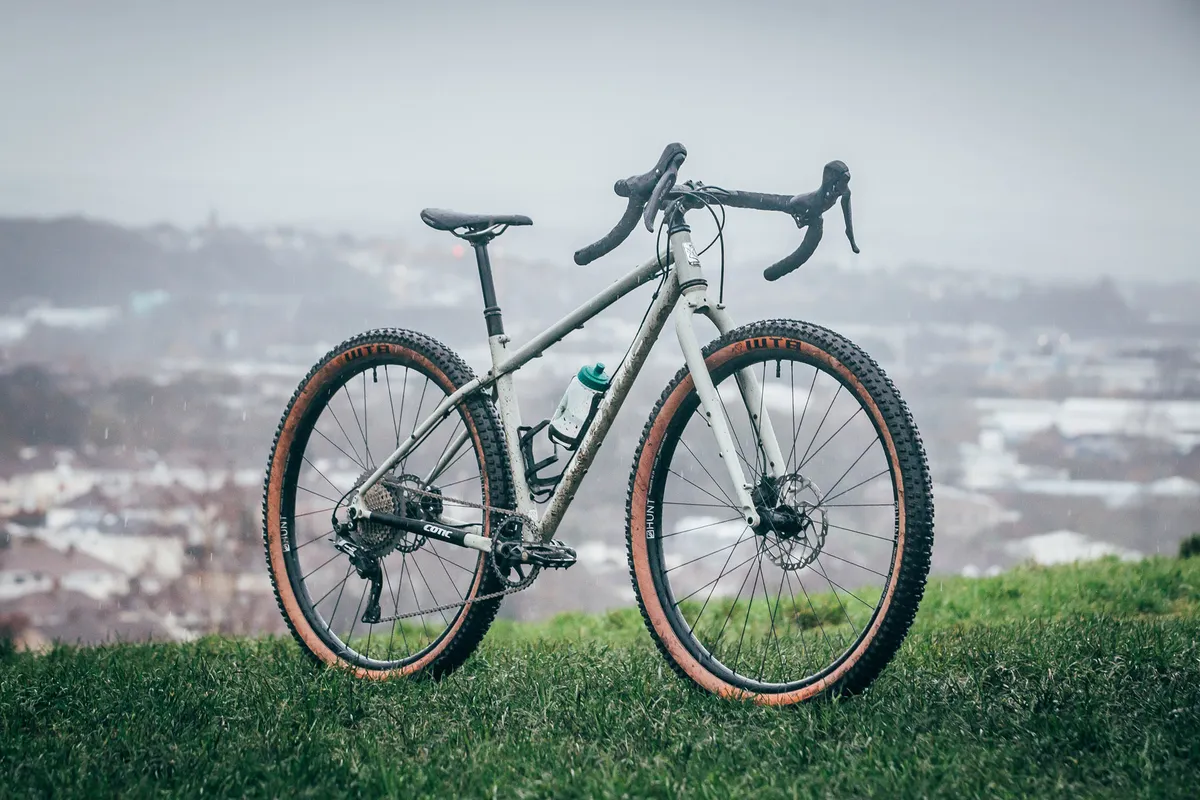
- £2,700 as tested
- Pros: MTB-like geometry and spec; space for 2.4in tyres; very capable on techy off-road sections
- Cons: A little slow on tarmac; oversized for smaller riders
There's a bit of a theme with steel gravel bikes that we've reviewed, which the Cotic Cascade follows. It borrows heavily from the mountain biking world with an anti-rust treated Reynolds 853 frame with long, low, slack geometry, Boost axle spacing, a dropper post and a 1x drivetrain. You can fit 180mm disc brake rotors.
The test bike was fitted out with 2.4in WTB Ranger tyres on Hunt Trailwide 29 wheels, which have a 30mm internal rim width. The Shimano GRX groupset is paired with an 11-51t MTB cassette.
The geometry and build leads to MTB-like handling, and we were able to traverse more technical features than on most gravel bikes. That's balanced by a slow ride once you hit tarmac or tamer gravel, however.
Ragley Trig
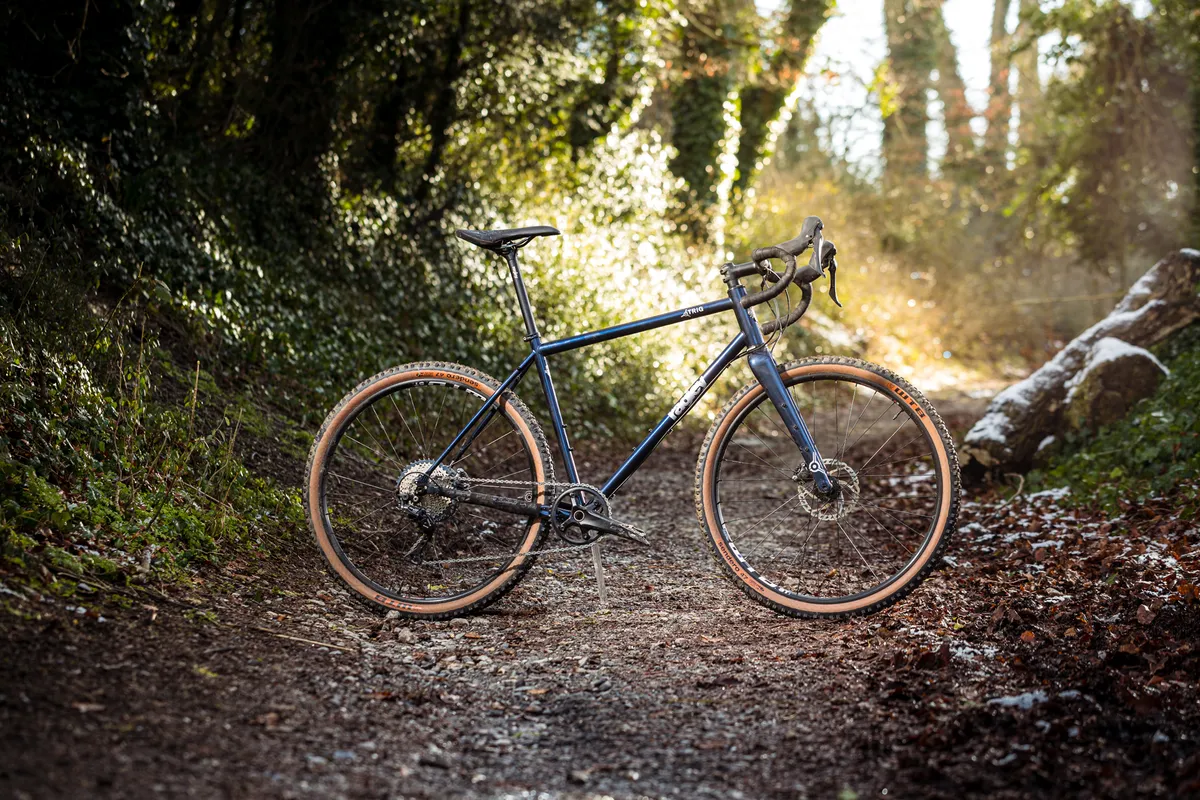
- £1,700 as tested
- Pros: Great handling; Shimano GRX drivetrain
- Cons: Noisy brakes; smaller wheels might be a disadvantage for some
Unlike Cinelli, UK brand Ragley gives you plenty of tyre clearance for the usual mud: 2.1in/47mm of it on the 650b wheels tested, although that drops to 40mm if you elect for 700c wheels.
Ragley's mainstay is mountain bikes and the Trig borrows MTB geometry to provide a long and low frame for stability when riding rougher, more challenging off-road sections. This does mean that, once you hit the tarmac, things slow up a little and some extra effort is required to make progress.
There are all the mounting points you need for bikepacking and the spec is well adapted to the rougher end of gravel too, with a mixed Shimano GRX 600/400 component spec and grippy 47mm WTB Sendero gravel bike tyres.
Ribble CGR 725 Steel
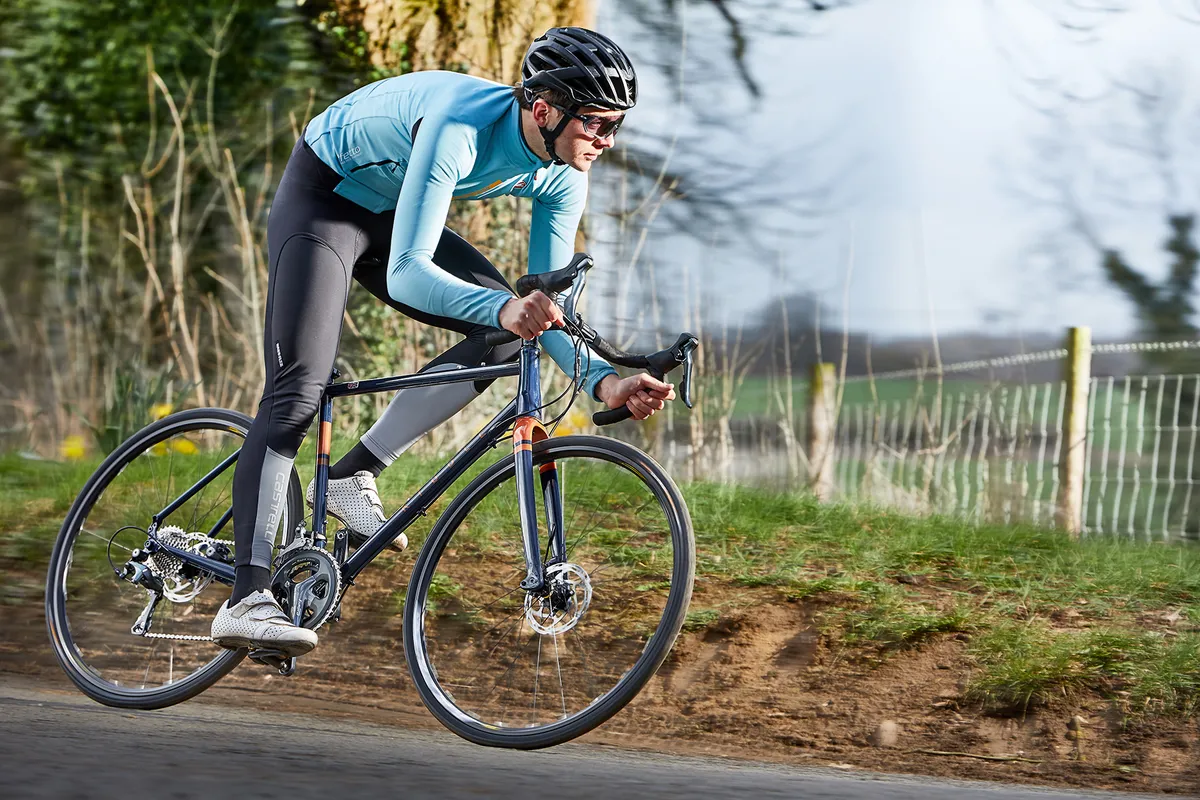
- £1,199/$1,257/AU$1,965 as tested
- Pros: Immensely versatile; classy steel frame
- Cons: A touch on the heavy side
Made from Reynolds 725 steel, Ribble's steel option sits alongside carbon, alloy and titanium bikes in its multi-talented cross/gravel/road CGR range. There's even an electric gravel bike in the range.
The bike's versatility is its strong point, enabling you to kit it out for road riding as well as hitting gravel, so it doesn't close down your options. You can fit either 650b or 700c wheels, with clearance of up to 47mm.
The ride is comfortable and compliant, so it's easy to clock up the miles, although we'd have preferred to see hydraulic disc brakes. It's as easy to upgrade to a higher rung of Shimano groupset though, as it is to change the wheels, tyres and other components via the Ribble Bike Builder.
Surly Grappler
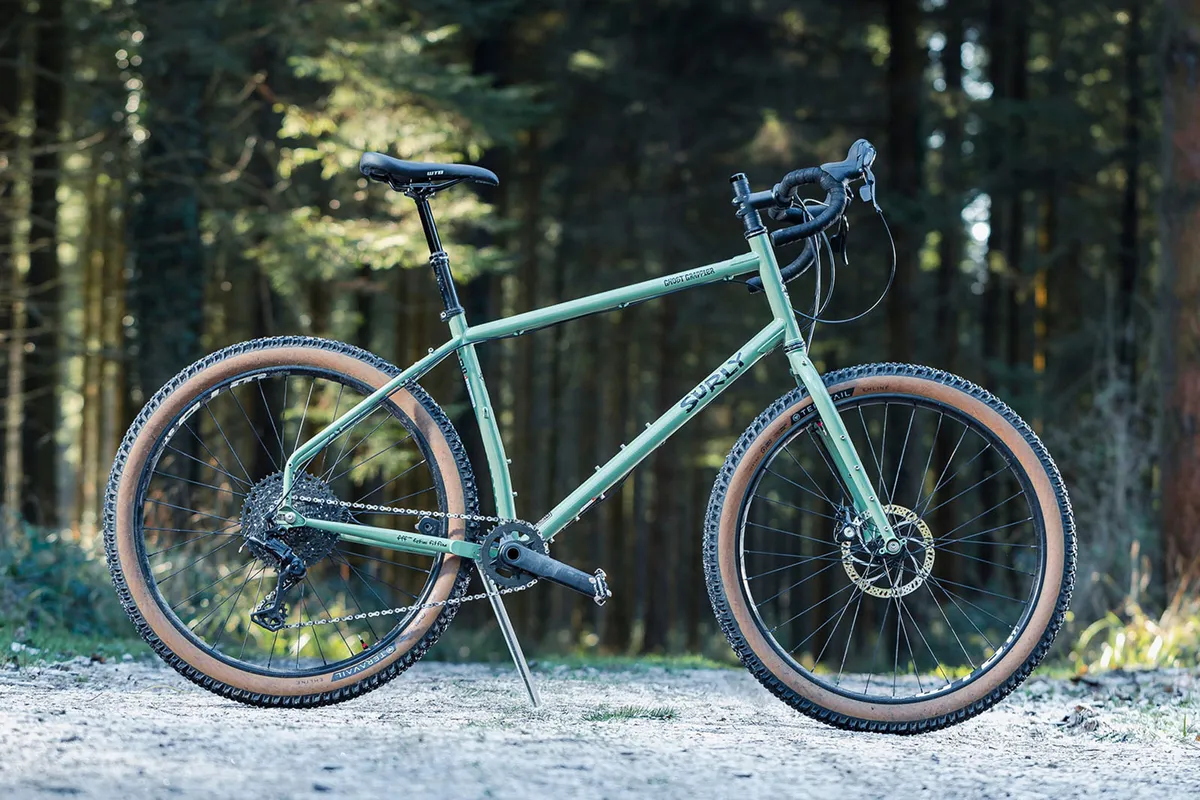
- £2,350/$1,950 as tested
- Pros: Stable and smooth on tricky terrain
- Cons: Braking could be better; drivetrain arguably not up to Shimano or SRAM standard
While many gravel bikes, particularly those designed for racing, are increasingly long and low, the Surly Grappler takes things the other way with a very high front end. Despite this and the long reach, the ride position feels perfect, although it's closer to a mountain bike than a road bike. The frame is electrophoretically painted for a tough, corrosion-resistant finish.
There's huge tyre clearance – up to 2.8in at the fork and 3in at the rear if you fit 650b wheels, thanks to the Boost axle spacing and a 73mm wide bottom bracket. The wide-range 10-speed Microshift drivetrain is also a bit different from the usual gravel fare and Surly specs a dropper post.
The Surly Grappler isn't fast, but it can reach places other gravel bikes can't, making it a great bike for exploring or a bikepacking expedition into the unknown.
Buyer’s guide to steel gravel bikes
What are the advantages of a steel gravel bike?
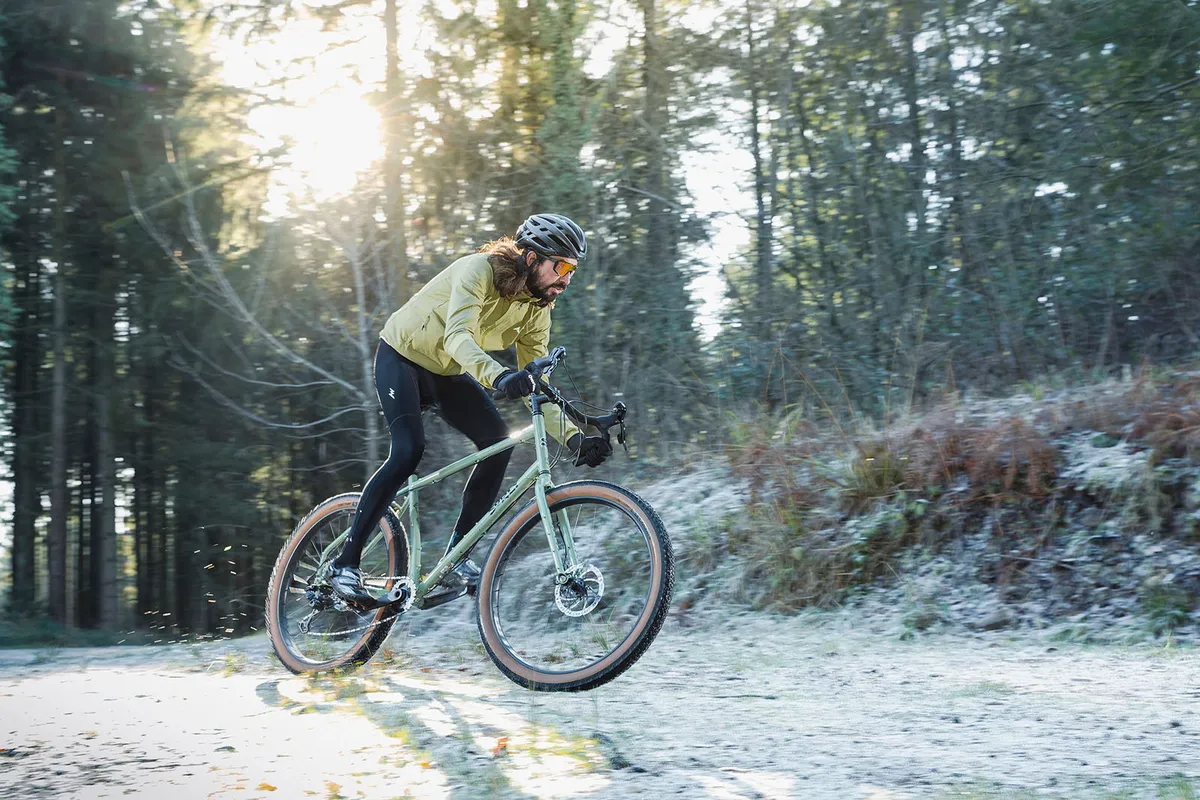
Like the best steel road bikes, some steel gravel bikes can be expensive, but there are still plenty of budget gravel bikes under £1,000 and gravel bikes under £2,000. They tend to be easy to service too, with threaded bottom brackets, and often with external cabling and lower-priced, more robust components. Durability tends to be good. Look after your steel frame and it should last you for many years.
If you're heading to far-flung places on your gravel bike, one advantage of steel is you can find someone who knows how to repair it almost everywhere. If it's run over by a truck in the Andes (it has happened), a local welder should be able to beat and weld it back together again.
You're going to be out of luck if the same thing happens to your carbon, titanium or aluminium gravel bike.
Are steel gravel bikes heavy?
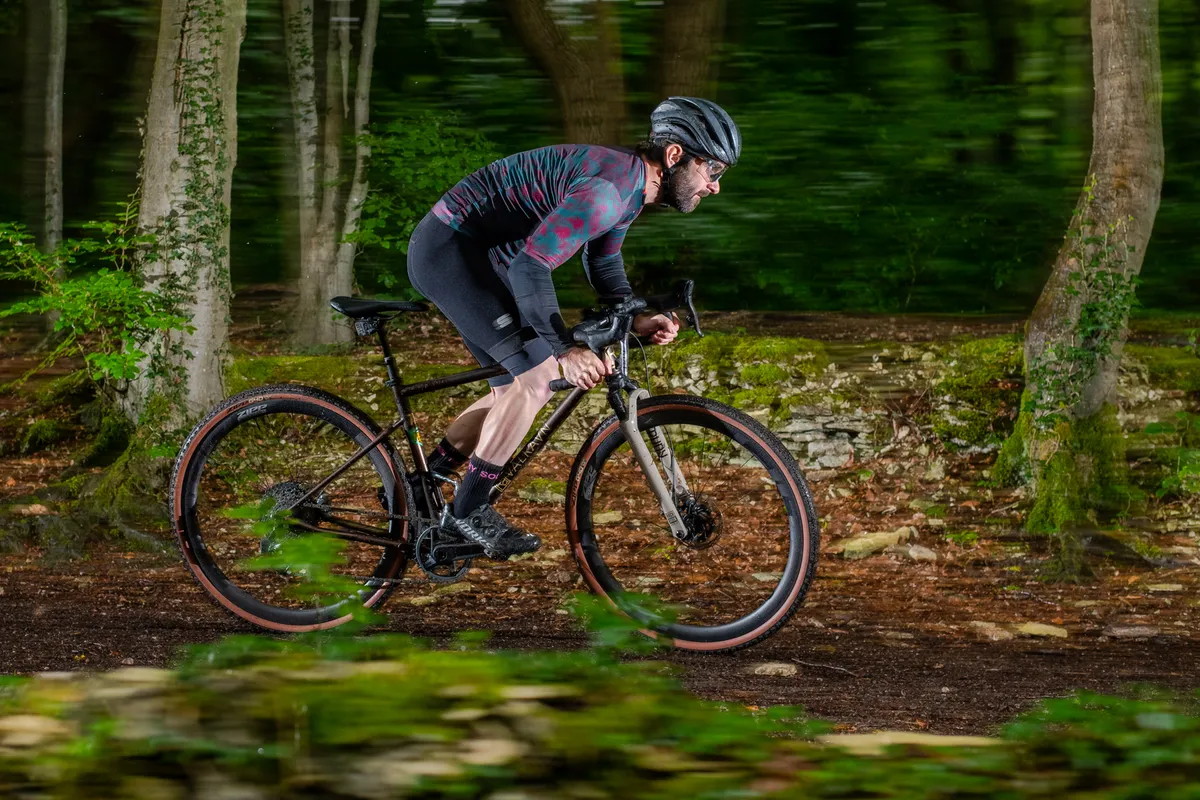
Steel gravel bikes tend to be heavier than gravel bikes made of other materials. That's not necessarily an issue though, particularly if you plan to take on a bikepacking expedition, where the weight of your luggage is likely to be more significant than any increase in bike or frame weight.
If your style of gravel riding tends to be bombing about in the woods, steel's robustness may also be more significant than any extra weight.
Steel gravel bikes vs carbon gravel bikes
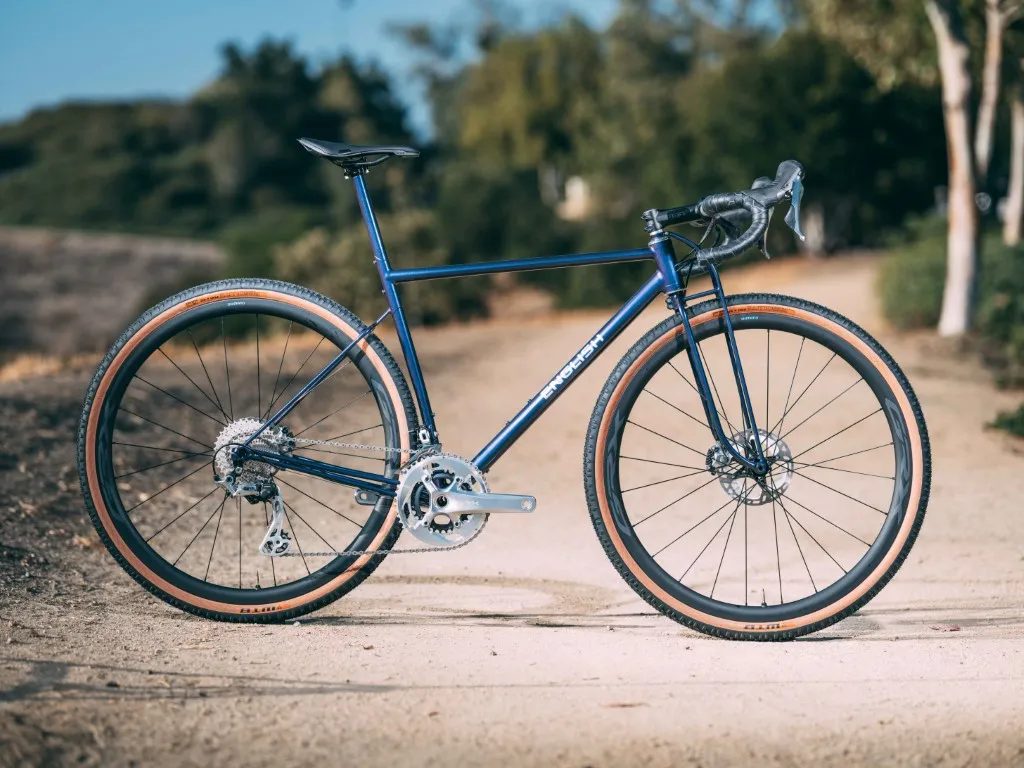
In general, a carbon gravel bike will be lighter than a steel gravel bike. The properties of carbon fibre mean it's easier to construct a frame that's compliant in one direction but stiff in another, because the fibre can be laid up to achieve this.
In contrast, frames made of steel must rely on tube shapes to achieve the same compliance features, because the metal has the same properties in all directions. The flex inherent in steel means it does a good job of soaking up vibrations from the surface you're riding over though.
Making a carbon gravel bike is big business. The moulds needed to form the frame are expensive, so a brand needs a large volume of production to recoup the initial setup cost. Bikes are usually made in Taiwan by sub-contractors. There's little room for customisation, so carbon gravel bikes normally come in pre-set sizes.
In contrast, it's a lot cheaper to set up to produce a steel gravel bike. That means steel is favoured by small producers, which in turn means there's more room for innovation. That's why many of the best steel gravel bikes feature unusual specs and geometries. It also makes a bespoke frame an option.
A steel gravel bike may be heavier, but it may also be more individualistic.
While the steel gravel bikes in this list take inspiration from the world of mountain bikes, many of the best gravel race bikes are made from carbon fibre and these tend to take greater inspiration from road bikes.
Steel gravel bikes vs titanium gravel bikes
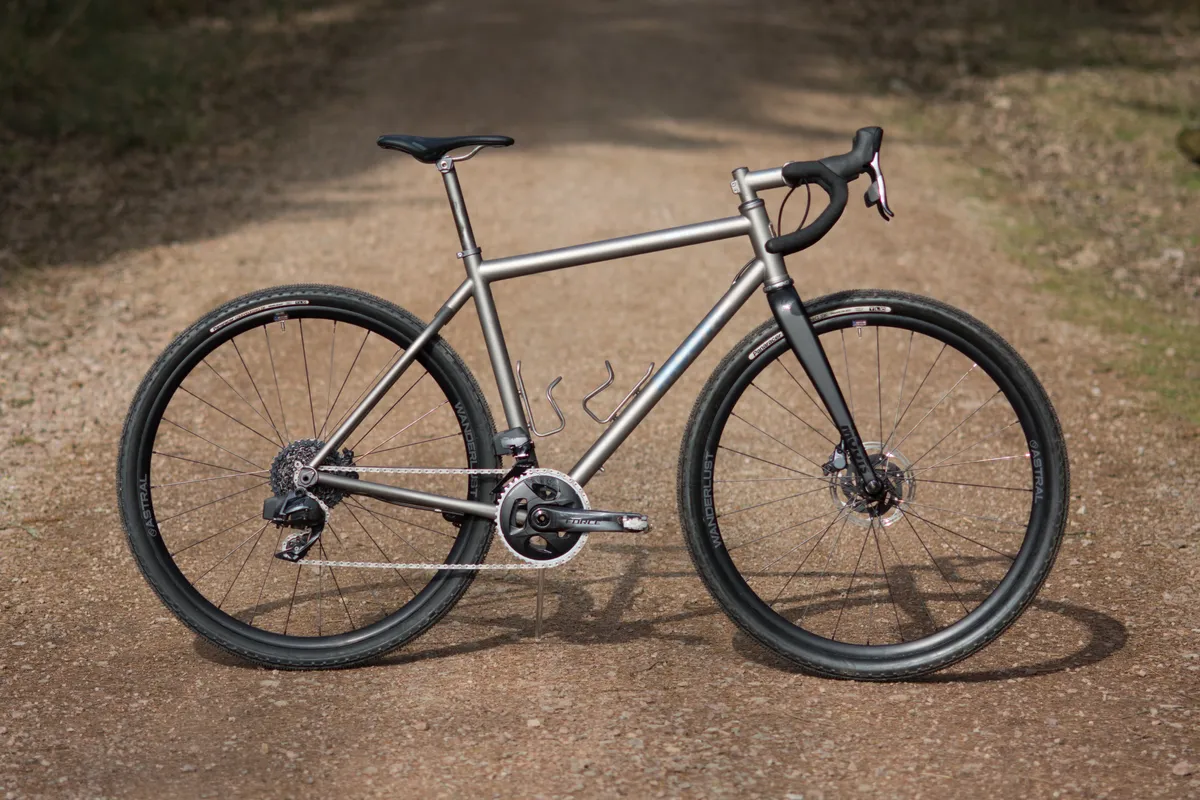
The best titanium gravel bikes will usually be considerably lighter than an equivalently specced steel gravel bike, because titanium tubing is stronger weight-for-weight. Titanium tubing for gravel bikes is also likely to have been drawn less, so its walls will be thicker, which in turn means it may be better able to withstand dings and bumps from rocks.
Most steel tubing used for bikes can rust, although some bikes can be made of stainless steel and many frames are treated to prevent rusting. That's not a problem with titanium, which doesn't corrode, which is why many titanium framesets go unpainted.
Titanium is very much more expensive than steel though and it's more difficult to build up into a frameset, so you'll pay a lot more for a titanium gravel bike. That's accentuated by the tendency to attach more expensive parts to titanium frames, to match the higher price tag for the frame.
